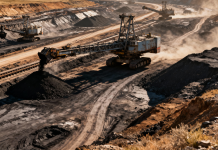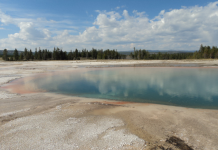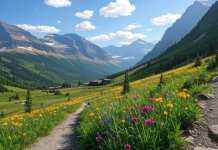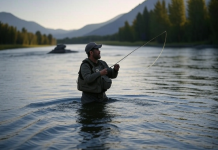The global flood has provided one of the most dramatic fossils ever discovered that shows a flying reptile, a Pterosaur, locked in combat with a fish known as Aspidorhynchus.
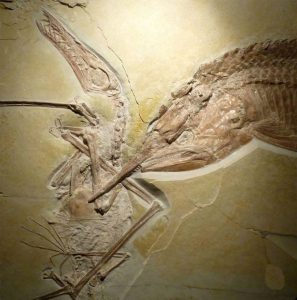 The fish has its jaws clamped tightly around the Pterosaur’s wing, and both animals are preserved together in stunning detail.
The fish has its jaws clamped tightly around the Pterosaur’s wing, and both animals are preserved together in stunning detail.
What we are seeing is not the slow work of millions of years, but a snapshot frozen in time — a violent struggle instantly cut short.
This fossil poses a serious problem for the idea of slow sedimentation.
If these creatures had been buried gradually, scavengers, decay, and water movement would have destroyed the scene.
Instead, both predator and prey were rapidly entombed before they could even separate, capturing the moment forever in stone.
Such preservation only happens when overwhelming forces bury living creatures suddenly under massive amounts of sediment.
From a biblical perspective, this is exactly what we would expect from the global Flood described in Genesis.
As the waters surged and sediment flowed, countless animals were buried in mid-action—eating, swimming, giving birth, even fighting for life.
This fossil is one of thousands that record catastrophe on a massive scale, not the calm passage of deep time.
Tall Tales
Far from being a tale of evolution and millions of years, the Pterosaur and fish locked together in stone testify to the reality of God’s judgment through the Flood, very likely just thousands of years ago.
For those that might argue that fossilization takes millions of years, it might be important to know that science can fossilize wood in just under a week.
Planet earth can and does change it’s land forms over short periods of time.
Mount St. Helens
After it’s eruption in 1980, the mud flows cooled and settled, they began to solidify.
Over time, the volcanic ash and debris mixed with water formed a cement-like material, which eventually hardened into rock.
This process contributed to the geological changes in the area surrounding Mount St. Helens, creating new land forms and altering river paths.
I’ve quite often wondered what kind of fossils I might find under the sedimentary rock that Mount St. Helens created just 45 short years ago — who knows — I might find a fossilized fish, or an elk, or maybe even a bear.

